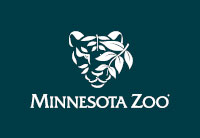 Poisoning from DDT and related chemicals had devastating effects on Peregrine falcons (Falco peregrinus) during the 1950’s – 1970’s. Biologists have since been carrying out peregrine recovery programs to restore their populations.
Poisoning from DDT and related chemicals had devastating effects on Peregrine falcons (Falco peregrinus) during the 1950’s – 1970’s. Biologists have since been carrying out peregrine recovery programs to restore their populations.
In the Midwest, releases of young peregrine falcon chicks started along the cliffs of the Mississippi River near Kellogg, Minnesota in 1982. In 1985, the recovery project expanded to other urban areas, such as Minneapolis, MN; Chicago, IL; and Milwaukee, WI, and included a total of 13 states and 2 Canadian provinces. Nearly 1300 young captive-bred falcon chicks over 20 years have been released, and as of 2007, over 200 nesting pairs have produced over 450 young in the regional population.
In 1999, the peregrine falcon was de-listed from the Endangered Species list and is currently being monitored for changes in the population that might require re-listing by the U.S. Fish and Wildlife Service. The State of Minnesota is currently considering de-listing the species based on the data of this project and the apparent continued growth in the state’s peregrine population.
Jackie Fallon, with assistance from other zoo staff members, monitors nearly 50 of the 57 known peregrine falcon territories in Minnesota and North Dakota. The process of monitoring and banding peregrine falcons involves 1) identification of all known birds, 2) confirming presence at a new site when reported, 3) monitoring the nest site to determine courtship behavior, number eggs laid, hatch date of chicks, and 4) determining a banding date of any known nestlings. Chicks are banded with both the USFWS federal band as well as the bi-colored regional band that allows identification of birds via spotting scopes. Also, a blood sample is taken for further contaminant studies and genetic work. Lastly, sometimes a feather clipping is also taken for the USFWS contaminant study. Monitoring of the chicks and adults continues past fledging date and into the fall migration season. Part of this project also involves rescue of any injured or uninjured chick during the time period when fledging occurs.
Minnesota Zoo’s Ulysses S. Seal Conservation Grant Program provided funding in both 2005 and 2007 for Jackie to monitor and band peregrine falcons as part of this successful program.




Get Social